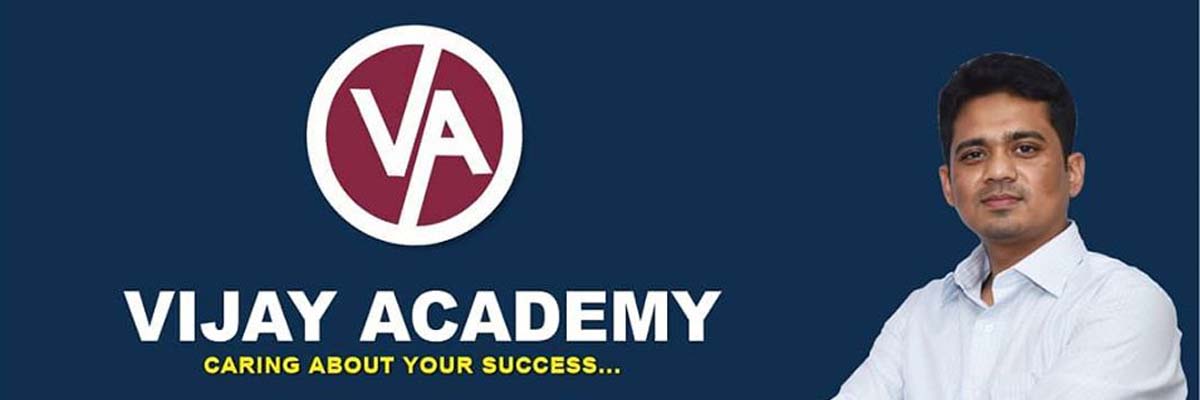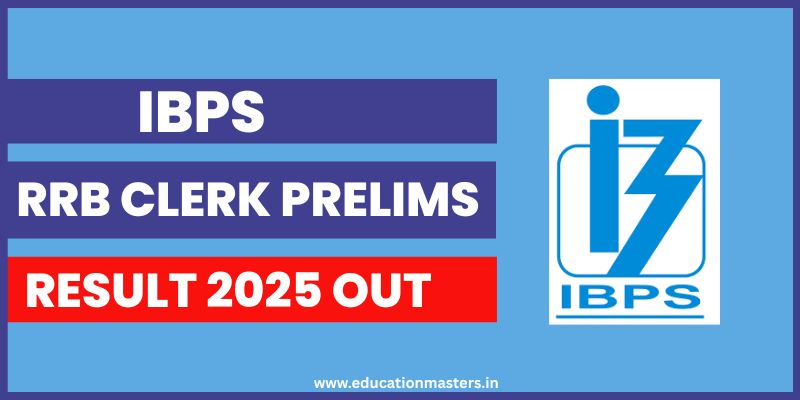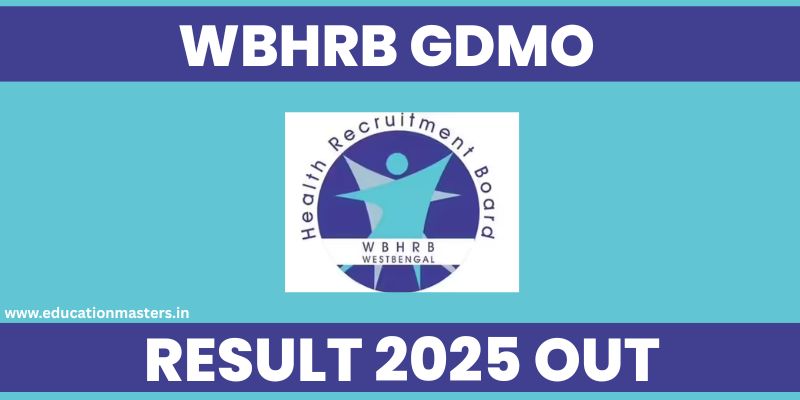SSC Junior Engineer Exam Pattern, Paper I & II Full Syllabus Download Here
By Siksha Raturi | Exams Syllabus | Oct 13, 2017

SSC Junior Engineer JE Exam Pattern 2017| every year, the Staff Selection Commission (SSC) conducts the written exam to hire the eligible and skilled candidates for the post junior Engineer. Candidates who are attending the written examination can see the whole SSC JE Exam Pattern and Syllabus on this page. Many applicants applied for the JE exam and now are busy in their preparation because there is a high competition for the SSC jobs. Before the preparations, all the candidates are recommended to view the exam pattern and syllabus. This will give details and a brief thought about the topics covered in the exam paper.
Paper I: Paper I of SSC JE Examination which is an object type is of 200 marks.
The Time duration of online exam is total 2 hours.
One-fourth of the marks will be deducted for each wrong answer and there is no penalty for a blank answer.
Paper II: Paper II of SSC JE Examination will be written type and is of 300 marks.
The Time duration of the written test is total 2 hours.
One-fourth of the marks will be deducted for each wrong answer and there is no penalty for a blank answer.
SSC JE examination includes the engineering questions of the level of Diploma in Civil, Electrical or Mechanical engineering. Read the full syllabus for the better performance in written Exam. Detailed Syllabus for SSC JE exam is given below-
General Intelligence & Reasoning:
Both verbal and non-verbal type of Questions is included in the syllabus. These subjects may cover the following topics-
The test will also include questions intended to test the candidate‘s abilities to deal with abstract ideas and symbols and their relationships, arithmetical computations and other analytical functions.
General Awareness
General Engineering-
Civil Engineering
Structural Engineering
Electrical Engineering
Civil Engineering Building Materials: Physical and Chemical properties, classification, standard tests, uses and manufacture/quarrying of materials e.g. building stones, silicate based materials, cement (Portland), asbestos products, timber and wood-based products, laminates, bituminous materials, paints, varnishes.
Estimating, Costing and Valuation: estimate, the glossary of technical terms, analysis of rates, methods, and unit of measurement, Items of work – earthwork, Brickwork (Modular & Traditional bricks), RCC work, Shuttering, Timber work, Painting, Flooring, Plastering. Boundary wall, Brick building, Water Tank, Septic tank, Bar bending schedule, Centre line method, Mid-section formula, Trapezoidal formula, Simpson‘s rule. The cost estimate of Septic tank, flexible pavements, Tube well, isolates and combined footings, Steel Truss, Piles, and pile caps. Valuation – Value and cost, scrap value, salvage value, assessed value, sinking fund, depreciation and obsolescence, methods of valuation.
Surveying : Principles of surveying, measurement of distance, chain surveying, working of prismatic compass, compass traversing, bearings, local attraction, plane table surveying, theodolite traversing, adjustment of theodolite, Levelling, Definition of terms used in levelling, contouring, curvature and refraction corrections, temporary and permanent adjustments of dumpy level, methods of contouring, uses of contour map, tachometric survey, curve setting, earthwork calculation, advanced surveying equipment.
Soil Mechanics: Origin of soil, phase diagram, Definitions-void ratio, porosity, the degree of saturation, water content, a specific gravity of soil grains, unit weights, density index and interrelationship of different parameters, Grain size distribution curves and their uses. Index properties of soils, Atterberg‘s limits, ISI soil classification and plasticity chart. The permeability of the soil, a coefficient of permeability, determination of the coefficient of permeability, Unconfined and confined aquifers, effective stress, quicksand, consolidation of soils, Principles of consolidation, the degree of consolidation, pre-consolidation pressure, normally consolidated soil, e-log p curve, computation of ultimate settlement. Shear strength of soils, direct shear test, Vane shear test, Triaxial test. Soil compaction, Laboratory compaction test, Maximum dry density and optimum moisture content, earth pressure theories, active and passive earth pressures, Bearing capacity of soils, plate load test, standard penetration test.
Hydraulics: Fluid properties, hydrostatics, measurements of flow, Bernoulli‘s theorem and its application, flow through pipes, flow in open channels, weirs, flumes, spillways, pumps, and turbines.
Irrigation Engineering: Definition, necessity, benefits, 2II effects of irrigation, types, and methods of irrigation, Hydrology – Measurement of rainfall, runoff coefficient, rain gauge, losses from precipitation – evaporation, infiltration, etc. Water requirement of crops, duty, delta and base period, Kharif and Rabi Crops, Command area, Time factor, Crop ratio, Overlap allowance, Irrigation efficiency. Different type of canals, types of canal irrigation, loss of water in canals. Canal lining – types and advantages. Shallow and deep to wells, yield from a well. Weir and barrage, Failure of weirs and permeable foundation, Slit and Scour, Kennedy‘s theory of critical velocity. Lacey‘s theory of uniform flow. Definition of the flood, causes, and effects, methods of flood control, water logging, preventive measure. Land reclamation, Characteristics of affecting the fertility of soils, purposes, methods, description of land and reclamation processes. Major irrigation projects in India.
Transportation Engineering : Highway Engineering – cross sectional elements, geometric design, types of pavements, pavement materials – aggregates and bitumen, different tests, Design of flexible and rigid pavements – Water Bound Macadam (WBM) and Wet Mix Macadam (WMM), Gravel Road, Bituminous construction, Rigid pavement joint, pavement maintenance, Highway drainage, Railway Engineering- Components of permanent way – sleepers, ballast, fixtures and fastening, track geometry, points and crossings, track junction, stations and yards. Traffic Engineering – Different traffic survey, speed-flow-density and their interrelationships, intersections, and interchanges, traffic signals, traffic operation, traffic signs and markings, road safety.
Environmental Engineering: Quality of water, a source of water supply, purification of water, distribution of water, need of sanitation, sewerage systems, circular sewer, oval sewer, sewer appurtenances, sewage treatments. Surface water drainage. Solid waste management – types, effects, engineered management system. Air pollution – pollutants, causes, effects, control. Noise pollution – cause, health effects, control.
Structural Engineering Theory of structures: Elasticity constants, types of beams – determinate and indeterminate, bending moment and shear force diagrams of simply supported, cantilever and over hanging beams. Moment of area and moment of inertia for rectangular & circular sections, bending moment and shear stress for a tee, channel and compound sections, chimneys, dams and retaining walls, eccentric loads, slope deflection of simply supported and cantilever beams, critical load and columns, Torsion of circular section.
Concrete Technology : Properties, Advantages and uses of concrete, cement aggregates, importance of water quality, water cement ratio, workability, mix design, storage, batching, mixing, placement, compaction, finishing and curing of concrete, quality control of concrete, hot weather and cold weather concreting, repair and maintenance of concrete structures.
RCC Design: RCC beams-flexural strength, shear strength, bond strength, a design of singly reinforced and double reinforced beams, cantilever beams. T-beams, lintels. One way and two-way slabs, isolated footings. Reinforced brickworks, columns, staircases, retaining wall, water tanks (RCC design questions may be based on both Limit State and Working Stress methods).
Steel Design: Steel design and construction of steel columns, beams roof trusses plate girders.
Basic concepts: Concepts of resistance, inductance, capacitance, and various factors affecting them. Concepts of current, voltage, power, energy and their units.
Circuit law: Kirchhoff‘s law, Simple Circuit solution using network theorems.
Magnetic Circuit: Concepts of flux, MMF, reluctance, Different kinds of magnetic materials, Magnetic calculations for conductors of different configuration e.g. straight, circular, solenoidal, etc. Electromagnetic induction, self, and mutual induction.
AC Fundamentals: Instantaneous, peak, R.M.S. and average values of alternating waves, Representation of sinusoidal waveform, simple series and parallel AC Circuits consisting of R.L. and C, Resonance, Tank Circuit. Poly Phase system – star and delta connection, 3 phase power, DC and sinusoidal response of R-Land R-C circuit. Measurement and measuring instruments: Measurement of power (1 phase and 3 phase, both active and
Measurement and measuring instruments: Measurement of power (1 phase and 3 phase, both active and reactive) and energy, 2 wattmeter method of 3 phase power measurement. Measurement of frequency and phase angle. Ammeter and voltmeter (both moving oil and moving iron type), an extension of range wattmeter, Multimeters, Megger, Energy meter AC Bridges. Use of CRO, Signal Generator, CT, PT and their uses. Earth Fault detection.
Electrical Machines :
(a) D.C. Machine – Construction, Basic Principles of D.C. motors and generators, their characteristics, speed control and starting of D.C. Motors. Method of braking motor, Losses, and efficiency of D.C. Machines.
(b) 1 phase and 3 phase transformers – Construction, Principles of operation, equivalent circuit, voltage regulation, O.C., and S.C. Tests, Losses, and efficiency. Effect of voltage, frequency, and waveform on losses. Parallel operation of 1 phase /3 phase transformers. Autotransformers.
(c) 3 phase induction motors, rotating magnetic field, the principle of operation, equivalent circuit, torque-speed characteristics, starting and speed control of 3 phase induction motors. Methods of braking, the effect of voltage and frequency variation on torque-speed characteristics. Fractional Kilowatt Motors and Single Phase Induction
Fractional Kilowatt Motors and Single Phase Induction Motors: Characteristics and applications. Synchronous Machines - Generation of 3-phase e.m.f. armature reaction, voltage regulation, parallel operation of two alternators, synchronizing, control of active and reactive power. Starting and applications of synchronous motors. Generation, Transmission and Distribution – Different types of power stations, Load factor, diversity factor, demand factor, cost of generation, inter-connection of power stations. Power factor improvement, various types of tariffs, types of faults, short circuit current for symmetrical faults. Switchgears – rating of circuit breakers, Principles of arc extinction by oil and air, H.R.C. Fuses, Protection against earth leakage / over current, etc. Buchholtz relay, Merz-Price system of protection of generators & transformers, protection of feeders and bus bars. Lightning arresters, various transmission and distribution system, comparison of conductor materials, efficiency of different system. Cable – Different type of cables, cable rating and derating factor.
Estimation and costing: Estimation of lighting scheme, electric installation of machines and relevant IE rules. Earthing practices and IE Rules.
Utilization of Electrical Energy: Illumination, Electric heating, Electric welding, Electroplating, Electric drives and motors.
Basic Electronics : Working of various electronic devices e.g. P N Junction diodes, Transistors (NPN and PNP type), BJT and JFET. Simple circuits using these devices.
Theory of Machines and Machine Design Concept of simple machine, Four bar linkage and link motion, Flywheels and fluctuation of energy, Power transmission by belts – V-belts and Flat belts, Clutches – Plate and Conical clutch, Gears – Type of gears, gear profile and gear ratio calculation, Governors – Principles and classification, Riveted joint, Cams, Bearings, Friction in collars and pivots. Engineering Mechanics and Strength of Materials Equilibrium of Forces, Law of motion, Friction, Concepts of stress and strain, Elastic limit and elastic constants, Bending moments and shear force diagram, Stress in composite bars, Torsion of circular shafts, Bucking of columns – Euler‘s and Rankin‘s theories, Thin walled pressure vessels.
Thermal Engineering Properties of Pure Substances : p-v & P-T diagrams of pure substance like H2O, Introduction of steam table with respect to steam generation process; definition of saturation, wet & superheated status. Definition of dryness fraction of steam, degree of superheat of steam. H-s chart of steam (Mollier‘s Chart).
1st Law of Thermodynamics : Definition of stored energy & internal energy, 1st Law of Thermodynamics of cyclic process, Non Flow Energy Equation, Flow Energy & Definition of Enthalpy, Conditions for Steady State Steady Flow; Steady State Steady Flow Energy Equation.
2nd Law of Thermodynamics : Definition of Sink, Source Reservoir of Heat, Heat Engine, Heat Pump & Refrigerator; Thermal Efficiency of Heat Engines & co-efficient of performance of Refrigerators, Kelvin – Planck & Clausius Statements of 2nd Law of Thermodynamics, Absolute or Thermodynamic Scale of temperature, Clausius Integral, Entropy, Entropy change calculation of ideal gas processes. Carnot Cycle & Carnot Efficiency, PMM-2; definition & its impossibility.
Air standard Cycles for IC engines : Otto cycle; plot on P-V, T-S Planes; Thermal Efficiency, Diesel Cycle; Plot on P-V, T-S planes; Thermal efficiency. IC Engine Performance, IC Engine Combustion, IC Engine Cooling & Lubrication.
Rankine cycle of steam : Simple Rankine cycle plot on P-V, T-S, h-s planes, Rankine cycle efficiency with & without pump work. Boilers; Classification; Specification; Fittings & Accessories : Fire Tube & Water Tube Boilers. Air Compressors & their cycles; Refrigeration cycles; Principle of a Refrigeraton Plant; Nozzles & Steam Turbines Fluid Mechanics &
Machinery Properties & Classification of Fluid : ideal & real fluids, Newton‘s law of viscosity, Newtonian and Non-Newtonian fluids, compressible and incompressible fluids.
Fluid Statics : Pressure at a point. Measurement of Fluid Pressure : Manometers, U-tube, Inclined tube.
Fluid Kinematics : Stream line, laminar & turbulent flow, external & internal flow, continuity equation.
Dynamics of ideal fluids : Bernoulli‘s equation, Total head; Velocity head; Pressure head; Application of Bernoulli‘s equitation.
Measurement of Flow rate Basic Principles: Venturimeter, Pilot tube, Orifice meter.
Hydraulic Turbines : Classifications, Principles.
Centrifugal Pumps : Classifications, Principles, Performance.
Production Engineering Classification of Steels : mild steal & alloy steel, Heat treatment of steel, Welding – Arc Welding, Gas Welding, Resistance Welding, Special Welding Techniques i.e. TIG, MIG, etc. (Brazing & Soldering), Welding Defects & Testing; NDT, Foundry & Casting – methods, defects, different casting processes, Forging, Extrusion, etc, Metal cutting principles, cutting tools, Basic Principles of machining with (i) Lathe (ii) Milling (iii) Drilling (iv) Shaping (v) Grinding, Machines, tools & manufacturing processes.
(i) Lathe (ii) Milling (iii) Drilling (iv) Shaping (v) Grinding, Machines, tools & manufacturing processes.
(ii) Milling (iii) Drilling (iv) Shaping (v) Grinding, Machines, tools & manufacturing processes.
(iii) Drilling (iv) Shaping (v) Grinding, Machines, tools & manufacturing processes.
(iv) Shaping (v) Grinding, Machines, tools & manufacturing processes.
(v) Grinding, Machines, tools & manufacturing processes.
SSC JE Exam Pattern 2017- 18
| Paper I (Objective) Mode of Examination: Online Exam | |||
| General Intellegence | General Awareness | Part-A General Engineering (Civil& Structural) OR Part-b General Engineering (Electrical) OR Part-C General Engineering (Mechanical) | |
Marks | 50 | 50 | 100 |
| Exam Duration | 2 hours | ||
Paper II (Conventional) Mode of Examination: Offline Exam (Written) | |||
| Part-A General Engineering (Civil& Structural) OR Part-b General Engineering (Electrical) OR Part-C General Engineering (Mechanical) | |||
| Marks | 300 | ||
| Exam Duration | 2 hours | ||
Paper I: Paper I of SSC JE Examination which is an object type is of 200 marks.
The Time duration of online exam is total 2 hours.
One-fourth of the marks will be deducted for each wrong answer and there is no penalty for a blank answer.
Paper II: Paper II of SSC JE Examination will be written type and is of 300 marks.
The Time duration of the written test is total 2 hours.
One-fourth of the marks will be deducted for each wrong answer and there is no penalty for a blank answer.
SSC JE Syllabus 2017- 18 (Paper I)
SSC JE examination includes the engineering questions of the level of Diploma in Civil, Electrical or Mechanical engineering. Read the full syllabus for the better performance in written Exam. Detailed Syllabus for SSC JE exam is given below-
General Intelligence & Reasoning:
Both verbal and non-verbal type of Questions is included in the syllabus. These subjects may cover the following topics-
- Analogies
- Similarities
- Differences
- Space visualization
- Problem solving
- Analysis
- Judgment
- Decision making
- Visual memory
- Discrimination
- Observation
- Relationship concepts
- Arithmetical reasoning
- Verbal and figure classification
- Arithmetical number series etc
The test will also include questions intended to test the candidate‘s abilities to deal with abstract ideas and symbols and their relationships, arithmetical computations and other analytical functions.
General Awareness
- Current Affairs
- India and its neighboring countries
- History
- Culture
- Geography
- Economic Science
- General Polity and Scientific Research, etc
General Engineering-
Civil Engineering
- Building Materials
- Estimating, Costing, and Valuation
- Surveying
- Soil Mechanics
- Hydraulics
- Irrigation Engineering
- Transportation Engineering
- Environmental Engineering
Structural Engineering
- Theory of Structures
- Concrete Technology
- RCC Design, Steel Design
Electrical Engineering
- Basic concepts
- Circuit law
- Magnetic Circuit
- AC Fundamentals
- Measurement and Measuring Instruments
- Electrical Machines
- Fractional Kilowatt Motors and single phase induction Motors
- Synchronous Machines
- Generation
- Transmission and Distribution
- Estimation and Costing
- Utilization and Electrical Energy
- Basic Electronics
- Mechanical Engineering
- Theory of Machines and Machine Design.
- Engineering Mechanics and Strength of Materials.
- Properties of Pure Substances.
- 1st Law of Thermodynamics.
- 2nd Law of Thermodynamics.
- IC Engines Combustion.
- Air standard Cycles for IC Engines.
- IC Engine Performance
- IC Engine Cooling & Lubrication
- Ranking cycle of System
- Boilers
- Classification
- Specification
- Fitting & Accessories
- Air Compressors & their cycles.
- Refrigeration cycles
- The principle of Refrigeration Plant
- Nozzles & Steam Turbines
- Properties & Classification of Fluids
- Fluid Statics, Measurement of Fluid Pressure
- Fluid kinematics
- Dynamics of Ideal fluids
- Measurement of Flow rate
- Basic principles.
- Hydraulic Turbines
- Centrifugal Pumps
- Classification of steels
SSC JE Paper II Syllabus
Part A (Civil & Structural Engineering)-
Civil Engineering Building Materials: Physical and Chemical properties, classification, standard tests, uses and manufacture/quarrying of materials e.g. building stones, silicate based materials, cement (Portland), asbestos products, timber and wood-based products, laminates, bituminous materials, paints, varnishes.
Estimating, Costing and Valuation: estimate, the glossary of technical terms, analysis of rates, methods, and unit of measurement, Items of work – earthwork, Brickwork (Modular & Traditional bricks), RCC work, Shuttering, Timber work, Painting, Flooring, Plastering. Boundary wall, Brick building, Water Tank, Septic tank, Bar bending schedule, Centre line method, Mid-section formula, Trapezoidal formula, Simpson‘s rule. The cost estimate of Septic tank, flexible pavements, Tube well, isolates and combined footings, Steel Truss, Piles, and pile caps. Valuation – Value and cost, scrap value, salvage value, assessed value, sinking fund, depreciation and obsolescence, methods of valuation.
Surveying : Principles of surveying, measurement of distance, chain surveying, working of prismatic compass, compass traversing, bearings, local attraction, plane table surveying, theodolite traversing, adjustment of theodolite, Levelling, Definition of terms used in levelling, contouring, curvature and refraction corrections, temporary and permanent adjustments of dumpy level, methods of contouring, uses of contour map, tachometric survey, curve setting, earthwork calculation, advanced surveying equipment.
Soil Mechanics: Origin of soil, phase diagram, Definitions-void ratio, porosity, the degree of saturation, water content, a specific gravity of soil grains, unit weights, density index and interrelationship of different parameters, Grain size distribution curves and their uses. Index properties of soils, Atterberg‘s limits, ISI soil classification and plasticity chart. The permeability of the soil, a coefficient of permeability, determination of the coefficient of permeability, Unconfined and confined aquifers, effective stress, quicksand, consolidation of soils, Principles of consolidation, the degree of consolidation, pre-consolidation pressure, normally consolidated soil, e-log p curve, computation of ultimate settlement. Shear strength of soils, direct shear test, Vane shear test, Triaxial test. Soil compaction, Laboratory compaction test, Maximum dry density and optimum moisture content, earth pressure theories, active and passive earth pressures, Bearing capacity of soils, plate load test, standard penetration test.
Hydraulics: Fluid properties, hydrostatics, measurements of flow, Bernoulli‘s theorem and its application, flow through pipes, flow in open channels, weirs, flumes, spillways, pumps, and turbines.
Irrigation Engineering: Definition, necessity, benefits, 2II effects of irrigation, types, and methods of irrigation, Hydrology – Measurement of rainfall, runoff coefficient, rain gauge, losses from precipitation – evaporation, infiltration, etc. Water requirement of crops, duty, delta and base period, Kharif and Rabi Crops, Command area, Time factor, Crop ratio, Overlap allowance, Irrigation efficiency. Different type of canals, types of canal irrigation, loss of water in canals. Canal lining – types and advantages. Shallow and deep to wells, yield from a well. Weir and barrage, Failure of weirs and permeable foundation, Slit and Scour, Kennedy‘s theory of critical velocity. Lacey‘s theory of uniform flow. Definition of the flood, causes, and effects, methods of flood control, water logging, preventive measure. Land reclamation, Characteristics of affecting the fertility of soils, purposes, methods, description of land and reclamation processes. Major irrigation projects in India.
Transportation Engineering : Highway Engineering – cross sectional elements, geometric design, types of pavements, pavement materials – aggregates and bitumen, different tests, Design of flexible and rigid pavements – Water Bound Macadam (WBM) and Wet Mix Macadam (WMM), Gravel Road, Bituminous construction, Rigid pavement joint, pavement maintenance, Highway drainage, Railway Engineering- Components of permanent way – sleepers, ballast, fixtures and fastening, track geometry, points and crossings, track junction, stations and yards. Traffic Engineering – Different traffic survey, speed-flow-density and their interrelationships, intersections, and interchanges, traffic signals, traffic operation, traffic signs and markings, road safety.
Environmental Engineering: Quality of water, a source of water supply, purification of water, distribution of water, need of sanitation, sewerage systems, circular sewer, oval sewer, sewer appurtenances, sewage treatments. Surface water drainage. Solid waste management – types, effects, engineered management system. Air pollution – pollutants, causes, effects, control. Noise pollution – cause, health effects, control.
Structural Engineering Theory of structures: Elasticity constants, types of beams – determinate and indeterminate, bending moment and shear force diagrams of simply supported, cantilever and over hanging beams. Moment of area and moment of inertia for rectangular & circular sections, bending moment and shear stress for a tee, channel and compound sections, chimneys, dams and retaining walls, eccentric loads, slope deflection of simply supported and cantilever beams, critical load and columns, Torsion of circular section.
Concrete Technology : Properties, Advantages and uses of concrete, cement aggregates, importance of water quality, water cement ratio, workability, mix design, storage, batching, mixing, placement, compaction, finishing and curing of concrete, quality control of concrete, hot weather and cold weather concreting, repair and maintenance of concrete structures.
RCC Design: RCC beams-flexural strength, shear strength, bond strength, a design of singly reinforced and double reinforced beams, cantilever beams. T-beams, lintels. One way and two-way slabs, isolated footings. Reinforced brickworks, columns, staircases, retaining wall, water tanks (RCC design questions may be based on both Limit State and Working Stress methods).
Steel Design: Steel design and construction of steel columns, beams roof trusses plate girders.
Part B (Electrical Engineering)-
Basic concepts: Concepts of resistance, inductance, capacitance, and various factors affecting them. Concepts of current, voltage, power, energy and their units.
Circuit law: Kirchhoff‘s law, Simple Circuit solution using network theorems.
Magnetic Circuit: Concepts of flux, MMF, reluctance, Different kinds of magnetic materials, Magnetic calculations for conductors of different configuration e.g. straight, circular, solenoidal, etc. Electromagnetic induction, self, and mutual induction.
AC Fundamentals: Instantaneous, peak, R.M.S. and average values of alternating waves, Representation of sinusoidal waveform, simple series and parallel AC Circuits consisting of R.L. and C, Resonance, Tank Circuit. Poly Phase system – star and delta connection, 3 phase power, DC and sinusoidal response of R-Land R-C circuit. Measurement and measuring instruments: Measurement of power (1 phase and 3 phase, both active and
Measurement and measuring instruments: Measurement of power (1 phase and 3 phase, both active and reactive) and energy, 2 wattmeter method of 3 phase power measurement. Measurement of frequency and phase angle. Ammeter and voltmeter (both moving oil and moving iron type), an extension of range wattmeter, Multimeters, Megger, Energy meter AC Bridges. Use of CRO, Signal Generator, CT, PT and their uses. Earth Fault detection.
Electrical Machines :
(a) D.C. Machine – Construction, Basic Principles of D.C. motors and generators, their characteristics, speed control and starting of D.C. Motors. Method of braking motor, Losses, and efficiency of D.C. Machines.
(b) 1 phase and 3 phase transformers – Construction, Principles of operation, equivalent circuit, voltage regulation, O.C., and S.C. Tests, Losses, and efficiency. Effect of voltage, frequency, and waveform on losses. Parallel operation of 1 phase /3 phase transformers. Autotransformers.
(c) 3 phase induction motors, rotating magnetic field, the principle of operation, equivalent circuit, torque-speed characteristics, starting and speed control of 3 phase induction motors. Methods of braking, the effect of voltage and frequency variation on torque-speed characteristics. Fractional Kilowatt Motors and Single Phase Induction
Fractional Kilowatt Motors and Single Phase Induction Motors: Characteristics and applications. Synchronous Machines - Generation of 3-phase e.m.f. armature reaction, voltage regulation, parallel operation of two alternators, synchronizing, control of active and reactive power. Starting and applications of synchronous motors. Generation, Transmission and Distribution – Different types of power stations, Load factor, diversity factor, demand factor, cost of generation, inter-connection of power stations. Power factor improvement, various types of tariffs, types of faults, short circuit current for symmetrical faults. Switchgears – rating of circuit breakers, Principles of arc extinction by oil and air, H.R.C. Fuses, Protection against earth leakage / over current, etc. Buchholtz relay, Merz-Price system of protection of generators & transformers, protection of feeders and bus bars. Lightning arresters, various transmission and distribution system, comparison of conductor materials, efficiency of different system. Cable – Different type of cables, cable rating and derating factor.
Estimation and costing: Estimation of lighting scheme, electric installation of machines and relevant IE rules. Earthing practices and IE Rules.
Utilization of Electrical Energy: Illumination, Electric heating, Electric welding, Electroplating, Electric drives and motors.
Basic Electronics : Working of various electronic devices e.g. P N Junction diodes, Transistors (NPN and PNP type), BJT and JFET. Simple circuits using these devices.
Part C (Mechanical Engineering)-
Theory of Machines and Machine Design Concept of simple machine, Four bar linkage and link motion, Flywheels and fluctuation of energy, Power transmission by belts – V-belts and Flat belts, Clutches – Plate and Conical clutch, Gears – Type of gears, gear profile and gear ratio calculation, Governors – Principles and classification, Riveted joint, Cams, Bearings, Friction in collars and pivots. Engineering Mechanics and Strength of Materials Equilibrium of Forces, Law of motion, Friction, Concepts of stress and strain, Elastic limit and elastic constants, Bending moments and shear force diagram, Stress in composite bars, Torsion of circular shafts, Bucking of columns – Euler‘s and Rankin‘s theories, Thin walled pressure vessels.
Thermal Engineering Properties of Pure Substances : p-v & P-T diagrams of pure substance like H2O, Introduction of steam table with respect to steam generation process; definition of saturation, wet & superheated status. Definition of dryness fraction of steam, degree of superheat of steam. H-s chart of steam (Mollier‘s Chart).
1st Law of Thermodynamics : Definition of stored energy & internal energy, 1st Law of Thermodynamics of cyclic process, Non Flow Energy Equation, Flow Energy & Definition of Enthalpy, Conditions for Steady State Steady Flow; Steady State Steady Flow Energy Equation.
2nd Law of Thermodynamics : Definition of Sink, Source Reservoir of Heat, Heat Engine, Heat Pump & Refrigerator; Thermal Efficiency of Heat Engines & co-efficient of performance of Refrigerators, Kelvin – Planck & Clausius Statements of 2nd Law of Thermodynamics, Absolute or Thermodynamic Scale of temperature, Clausius Integral, Entropy, Entropy change calculation of ideal gas processes. Carnot Cycle & Carnot Efficiency, PMM-2; definition & its impossibility.
Air standard Cycles for IC engines : Otto cycle; plot on P-V, T-S Planes; Thermal Efficiency, Diesel Cycle; Plot on P-V, T-S planes; Thermal efficiency. IC Engine Performance, IC Engine Combustion, IC Engine Cooling & Lubrication.
Rankine cycle of steam : Simple Rankine cycle plot on P-V, T-S, h-s planes, Rankine cycle efficiency with & without pump work. Boilers; Classification; Specification; Fittings & Accessories : Fire Tube & Water Tube Boilers. Air Compressors & their cycles; Refrigeration cycles; Principle of a Refrigeraton Plant; Nozzles & Steam Turbines Fluid Mechanics &
Machinery Properties & Classification of Fluid : ideal & real fluids, Newton‘s law of viscosity, Newtonian and Non-Newtonian fluids, compressible and incompressible fluids.
Fluid Statics : Pressure at a point. Measurement of Fluid Pressure : Manometers, U-tube, Inclined tube.
Fluid Kinematics : Stream line, laminar & turbulent flow, external & internal flow, continuity equation.
Dynamics of ideal fluids : Bernoulli‘s equation, Total head; Velocity head; Pressure head; Application of Bernoulli‘s equitation.
Measurement of Flow rate Basic Principles: Venturimeter, Pilot tube, Orifice meter.
Hydraulic Turbines : Classifications, Principles.
Centrifugal Pumps : Classifications, Principles, Performance.
Production Engineering Classification of Steels : mild steal & alloy steel, Heat treatment of steel, Welding – Arc Welding, Gas Welding, Resistance Welding, Special Welding Techniques i.e. TIG, MIG, etc. (Brazing & Soldering), Welding Defects & Testing; NDT, Foundry & Casting – methods, defects, different casting processes, Forging, Extrusion, etc, Metal cutting principles, cutting tools, Basic Principles of machining with (i) Lathe (ii) Milling (iii) Drilling (iv) Shaping (v) Grinding, Machines, tools & manufacturing processes.
(i) Lathe (ii) Milling (iii) Drilling (iv) Shaping (v) Grinding, Machines, tools & manufacturing processes.
(ii) Milling (iii) Drilling (iv) Shaping (v) Grinding, Machines, tools & manufacturing processes.
(iii) Drilling (iv) Shaping (v) Grinding, Machines, tools & manufacturing processes.
(iv) Shaping (v) Grinding, Machines, tools & manufacturing processes.
(v) Grinding, Machines, tools & manufacturing processes.
सरकारी नौकरियों, जीके अपडेट्स और करेंट अफेयर्स की ताज़ा जानकारी सबसे पहले पाने के लिए:
-
हमारे WhatsApp चैनल को फॉलो करें:
https://whatsapp.com/channel/0029Vb6sjZz0wajwDXcd5B0U -
हमारे Telegram चैनल को फॉलो करें:
https://t.me/educationmastersin -
हमारे Facebook Page को फॉलो करें:
https://www.facebook.com/educationmastersindia







.jpg)
